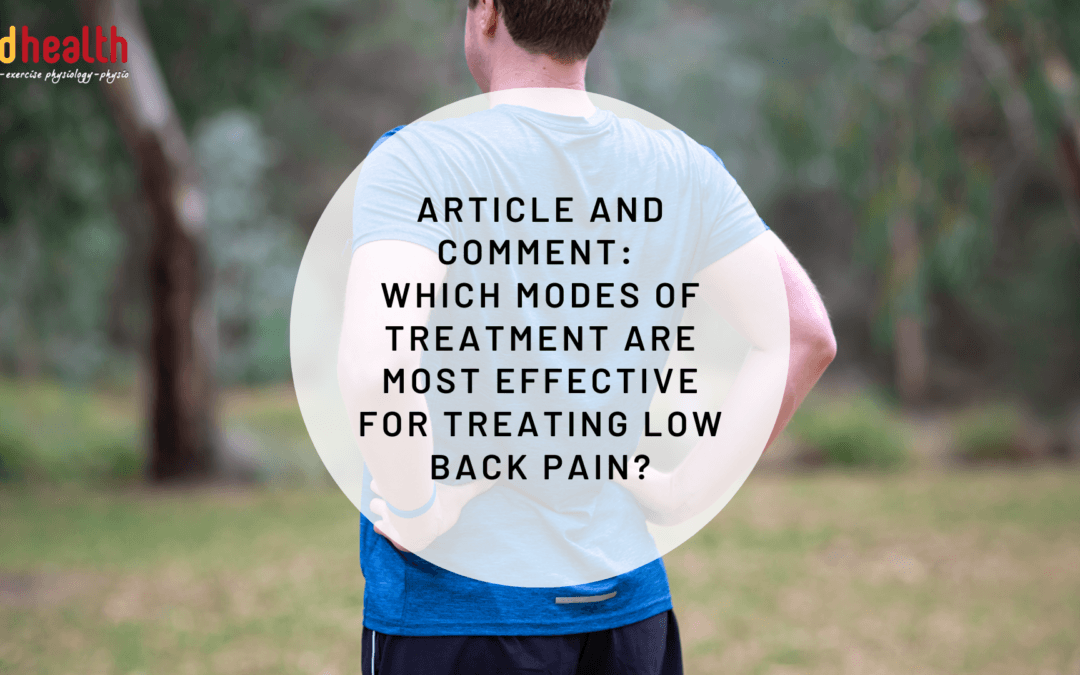Low back pain is the most common musculoskeletal condition affecting adult populations.
It is also a leading cause of disability when it becomes a chronic condition (lasting longer than 12 weeks).
Most health professionals find chronic low back pain difficult to treat as it can take a long period of time for improvements in symptoms to occur.
Recently, passive manual therapies such as massage, ultrasound, and hot/cold therapies alone have been proven to be non-effective in the long-term treatment of chronic low back pain. Comparatively, therapies such as exercise and education or a combination of the two have been proven to be effective in treating low back pain, especially in the long-term.
But which mode of exercise is most effective at reducing low back pain? Stretching? Walking? Cardio? Strength training?
A recent meta-analysis of all the best current literature by Owen et.al. (2019) helps shed some light on this question, finding the following:
- A combination of clinical pilates, stabilisation-motor control exercises, resistance/strength training, and high-intensity interval training is most beneficial in reducing low back pain
- Exercise-based training is much more effective than hands-on treatment or manual therapies
What does this tell us? If you have low back pain – MOVE! Most forms of exercise will help improve your symptoms.
If you are scared of re-injury or exacerbation of your pain, see an exercise-based rehab professional like our Physiotherapists or Accredited Exercise Physiologists at MD Health, who are specifically trained in helping you improve your pain and strength/stability levels.
With low back pain rehab in particular, please keep in mind:
- It may take some time for symptoms to improve. Have faith, be consistent, and stay positive!
- Flare ups (spikes in pain) are normal! Speak to your physio/exercise physiologist to come up with strategies of how to deal with flare-ups
- Complete REST (i.e. bed rest) and PASSIVE therapies are NOT the answer! Move/exercise as tolerated, and you WILL GET BETTER!!!
Want to know more?
If you want more information regarding this article or would like to book for a FREE full body assessment with one of our Physiotherapists or Exercise Physiologists, call us on 9857 0644 or email us at admin@md-health.com.au
Which specific modes of exercise training are most effective for treating low back pain?
Low back pain is the leading cause of disability and the most common of all non-communicable diseases. Chronic low back pain (CLBP) is pain lasting 12 weeks or longer, localised below the costal margin and above the inferior gluteal folds, with or without leg pain. While CLBP makes up approximately 20% of all low back pain cases, it generates approximately 80% of the direct costs of low back pain. In up to 90% of patients with CLBP, clinicians cannot make a specific diagnosis and therefore patients are classified as having ‘non-specific’ CLBP. There is a need to identify and evaluate the efficacy of interventions capable of treating non-specific CLBP.



